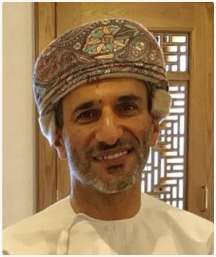The Energy and Minerals Sector Skills Unit (EMSSU) is an Employer-led Organisation that seeks to build a skills system, driven by Employer demand. It plays a central role in developing a demand-driven skill development system and provides a platform “for the Industry” to capture the Industry’s skill demands.
Become the recognised reference for skills development ecosystem for the Energy Sector in the Sultanate of Oman.
To develop and promote high calibre competent workforce in the Energy and Minerals Sector.
The EMSSU Governing Board is made up of non-executive Industry and Government Representatives. The Board plays a pivotal role in developing the strategic and organisational aims of the EMSSU and in monitoring its progression.
The EMSSU Secretariat is managed by an appointed manager by the CEO of OPAL and reporting to the Governing Board. The secretariat comprises of the NOS Pack and the Research & Development teams. The EMSSU operation and activities supported directly by OPAL Quality Mark and HCD Products & Service departments.
In order to support the activities of the EMSSU and ensure Sector participation and engagements, several industrial advisory committees have been established, including but not limited to the Operating and Service Companies’ HR Committees, the National Occupational Standards (NOS) Pack Committee and the Training Providers Committee.






The Occupational Map (OM) is a map of the Sector that is created by identifying the Sub-Sectors and Occupations. It is the product of the occupational analysis and is a visual representation of the Occupation / Job Hierarchy of the Sector.
National Occupational Standards (NOS) specify the standard of performance an individual must achieve when carrying out a function in the workplace, together with specifications of the underpinning knowledge and skills. The Standards express ‘what an Individual need to do, know and understand in order to carry out a particular job role or function’.
NOS can be used in a wide range of human resource management and development and have both economic and social outcomes.
Labour Market Information Analysis (LMIA) includes all quantitative or qualitative data and analysis related to employment and the workforce. The goal of LMIA is to help in making plans, decisions and choices for a variety of purposes, including business investment decision making, career planning and preparation, education and training offerings and job search opportunities.
Taminat Complex, Building No 55/9, Street No 53.P.O. Box 1640, PC 115. Al Ghubra, Muscat, Sultanate of Oman.
If you have queries or concerns, please feel free to fill out and submit the enquiry form and the Support Team will get in touch with you shortly